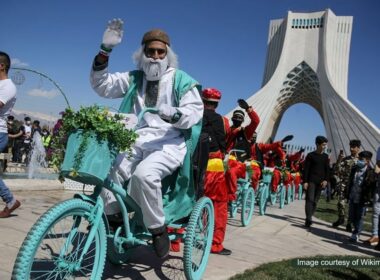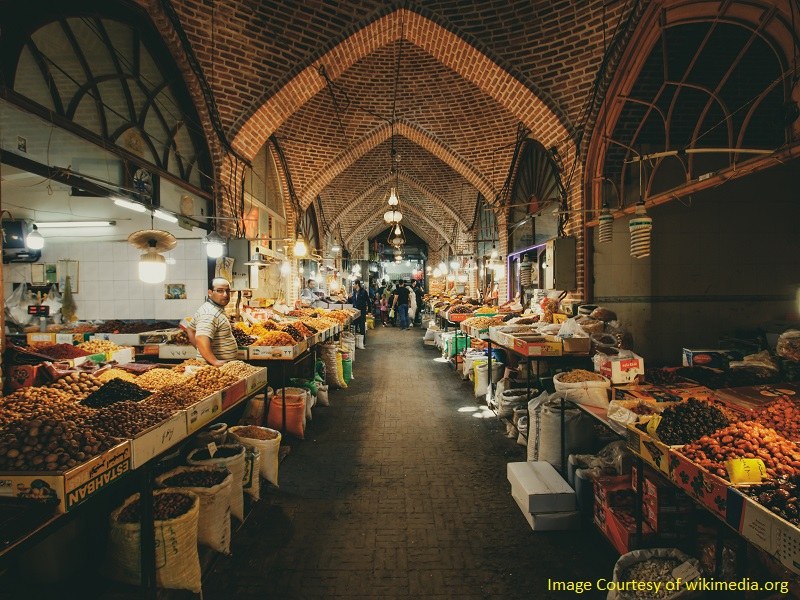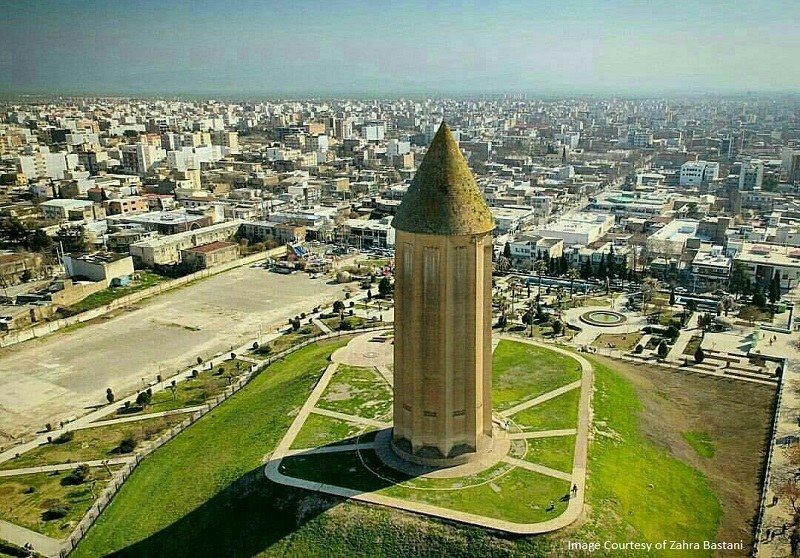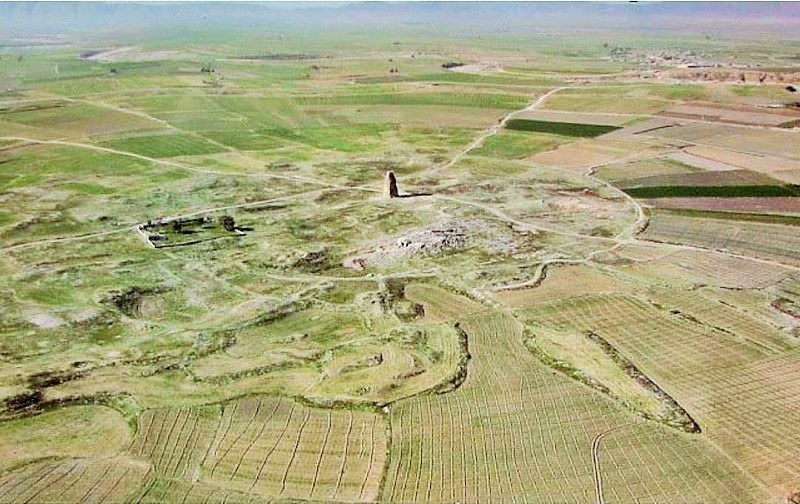
When the phrase Firuzabad Ensemble comes to mind, it reminds us of several significant historic sites that deserve to be World Human Sites. Here we introduce them one by one so that you get to understand the importance of these sites.
Firuzabad Ensemble includes Firuzabad City
Firuzabad, formerly known as Gur, is a city in the south of Shiraz. It is one of the politico-cultural capital of the Sassanid Empire in different periods. Ardeshir Babakan, one of the Sassanid kings, founded Firuzabad. As one of the strategic cities of the Sassanid Empire, the city had special importance at its time.
The city has an area of approximately 3579 km. It is located 120 meters from Shiraz. As Firuzabad has many relics, many fans of Sassanid art and architecture visit the city every year. It is one of the tourist attractions of Iran.
Firuzabad is on a particular circular plan that makes it quite interesting. It should be noted that the history of this city dates back to the Sassanid era. During the Achaemenid Empire, it was an important area for the government. However, during the reign of Ardashir Babakan, Firuzabad found a special place in the region and became the capital.
Equipped with a security fence that surrounded it, as well as numerous military towers and castles, Firuzabad was one of the most secure areas of the Sassanid Empire.
It is narrated that when Alexander attacked the city, he did not find any method to enter it. Eventually, by redirecting the river, he placed the city into the flood path and caused Firuzabad to fall. However, Ardeshir Babakan succeeded later in discharging water from the city and rebuilt a new city there called Ardashir-Khwarrah. In the end, he started his reign over Firuzabad.
Palace of Ardeshir Babakan in Firuzabad Ensemble
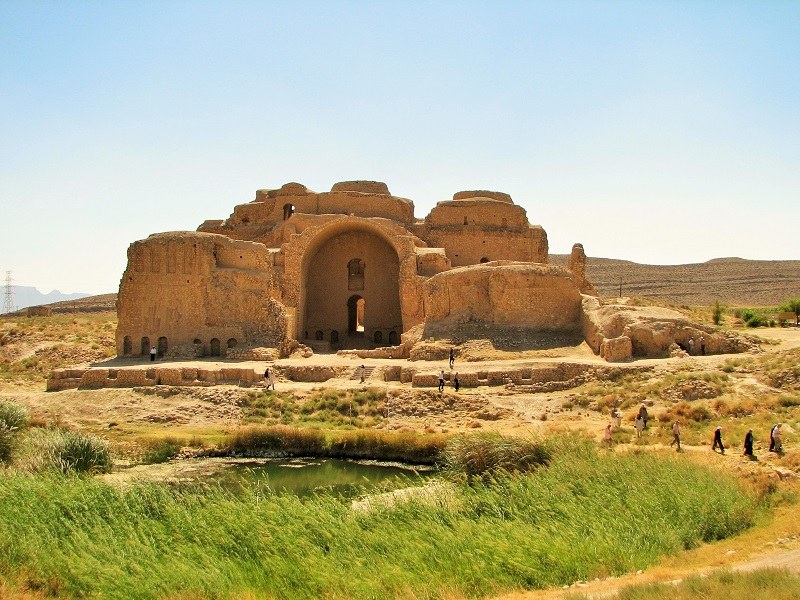
One of the most impressive parts of ancient Firuzabad, which has still the sense of Sassanid era, is the palace which used to be occupied by Ardeshir Babakan. It was the main headquarter of his government. This building, made of rock and plaster mortar, is located in one of the beautiful Firuzabad plains and ends a lake on the north.
The Palace of Ardeshir Babakan is located on a square-shaped platform, which distinguishes this palace from other Iranian buildings. The architecture of most of the Iranian historical monuments has some sort of a circular base. Meanwhile, the use of a square model in the construction of palaces became popular among Iranian architects since the Sassanid era.
The architects designed the palace according to Sassanid architectural forms. It is 116 meters long and 55 meters wide, with numerous corridors and eyvans. In the eastern and western parts of this palace, there are halls connected to each other by eyvans. One of the most distinguished parts of the palace is its triple domes.
Decorated by beautiful stuccos and well-constructed vaults, Ardeshir Palace is one of the most prominent examples of architecture in the Sassanid era. Another interesting feature of this palace is the separation of governmental and residential sections. Therefore, along with the administrative palace, there is a vast hall, that was planned for the king and governmental officers to gather together.
At the end of the palace and its exterior, there are the main courtyard and a lake creating a fantastic view of the palace of Ardeshir. Although, we can also see the lake on the exterior of the palace.
Iran National Heritage Organization has inscribed Ardeshir Babakan Palace as one of the ancient heritages of Firuzabad of Fars province.
Qal’eh Dokhtar of Sassanids Ensemble in the Area
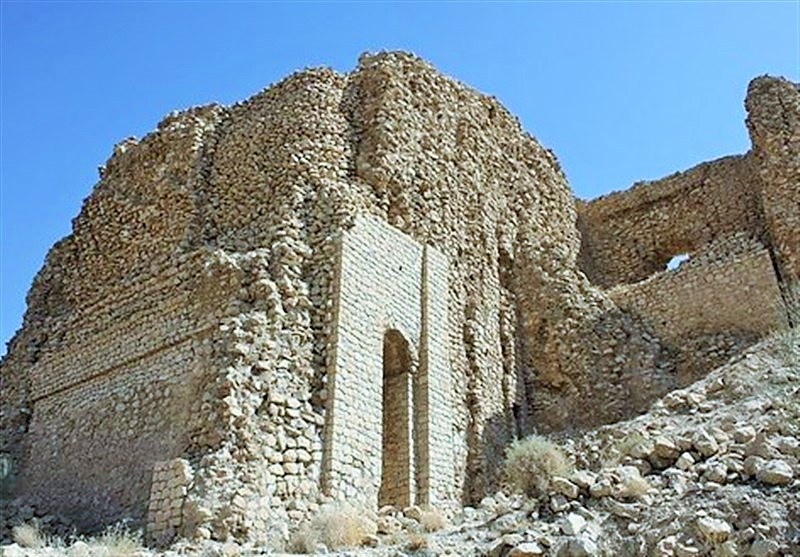
The name of this fortress, Qal’eh Dokhtar, literally means the Maiden Castle, is another historical representation of the Sassanid art and architecture. This castle, located above the heights of the area, is very important in terms of its Sassanid architecture. This palace, with a hierarchical plan and multiple corridors and staircases, is unique in its kind and has a remarkable plan.
Made of rock and plaster mortar and equipped with a particular dome, this castle reflects the form of Sasanid architecture. Qal’eh Dokhtar, which was a safe and impenetrable for Ardeshir Babakan due to its impassability, was believed to lead to the palace of Ardeshir by an underground hall. Although there are kilometers of distance between these two monuments, people used to have such opinions. Thus, at the time of the danger, the underground hall led the king and important people to the castle. However, archeologists and historians have not definitely proved this idea.
Minaret of Gur City
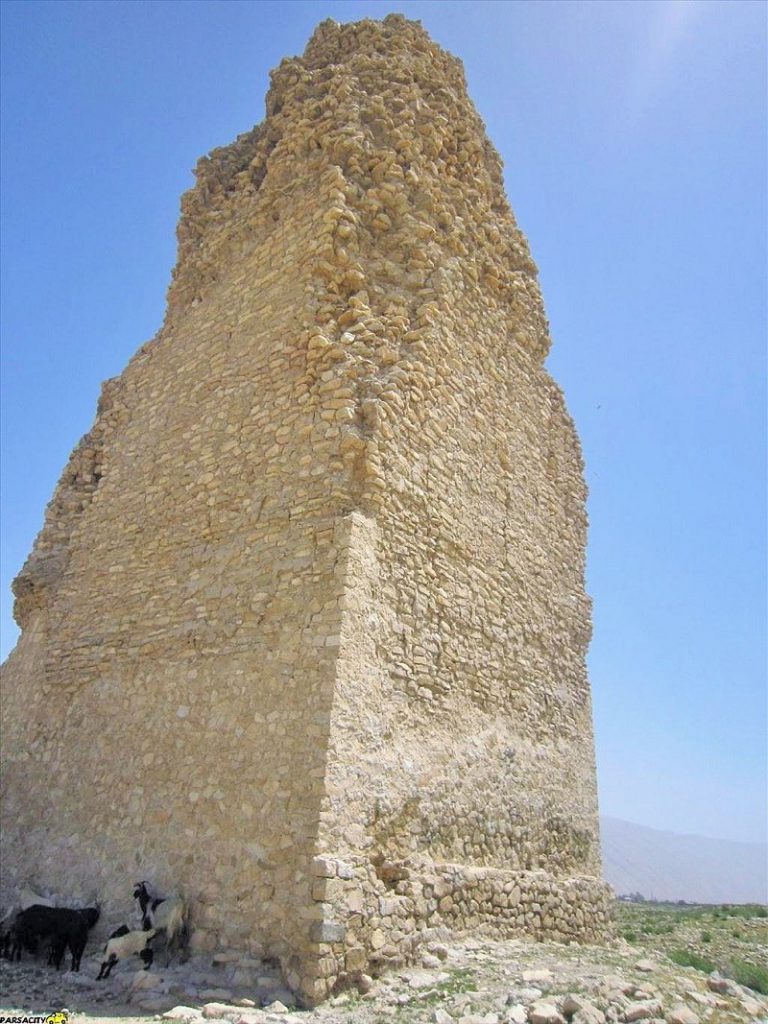
Another sign of the Sassanid era of Firuzabad Ensemble is a tower-like structure that is unique in its kind. According to the Sassanid architecture form, the base of the structure is square and the rest of it has changed to a tower. Located at the center of the ancient city of Firuzabad, Minaret of Gur City was one of the official emblems of the region during the Sassanid era and the symbol of imperial power.
This structure, made of granite and mortar, is about 9 meters long and 30 meters high. According to archaeologists and historians, apart from its symbolic state, this structure had also got practical applications and people used that as a temple, reservoir for storing water, etc. Iran National Heritage Organization has listed the minaret of the city of Gur as one of the ancient heritages of Firuzabad.
Rock Relief of Ardeshir Victory
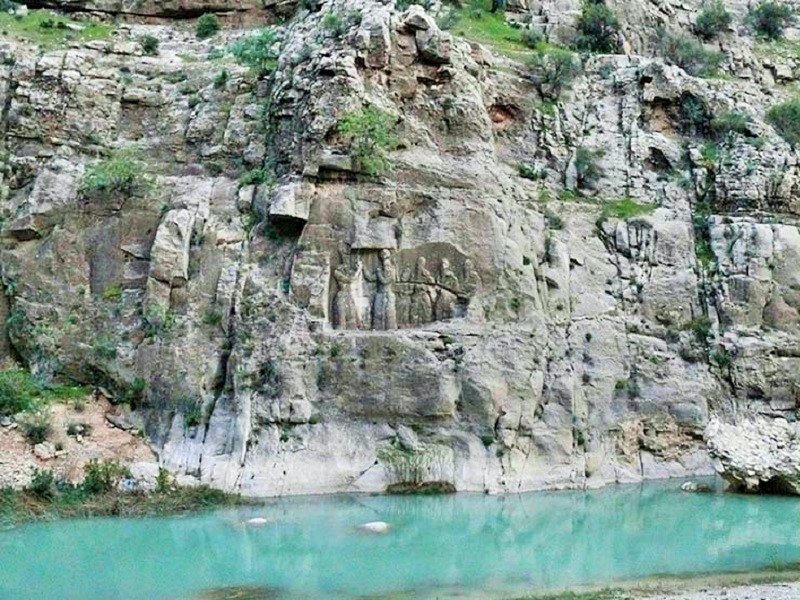
Naqsh-e Piroozi, or the Rock Relief of Ardeshir’s Victory, is one of the most primary reliefs of the Firuzabad Ensemble dating back to the Sassanid Empire. It is located near the Firuzabad River. This rock relief indicating the victory of Ardeshir Babakan against Ardavan V in war represents all the features of Sassanid rock carvings.
The actual state of the figures, their angles, and the attention to the details in this relief are also well visible. As one of the non-religious carvings, the rock relief of Ardeshir Victory was carved from three different angles. The relief shows clearly the scene of Ardeshir’s victory.
Pahlavi Inscription of Mehr-Nerse & Tangab Bridge
At Tangab gorge, on an ancient road leading to Gur City, there’s a Pahlavi inscription carved on the face of the mount. This 7-lin writing has been carved there by the order of Mehr-Nerse (Mihr Narseh). He was the minister of several Sassanid kings. Pahlavi is the Middle Persian writing script used by Iranians.
The above inscription is near a bridge at Tangab gorge, which dates back to the same period. These two are among the relics constituting the Firuzabad remnants of the Sassanid Era.
Due to its historical background, Firuzabad Ensemble is full of small and large ancient buildings and other relics. Each one is a documentary of antiquity that exhibits the Sassanid art and architecture. Meanwhile, we can find the most important traces of the Sassanid Empire near the palace of Ardeshir Babakan, Qal’eh Dokhtar, the Rock Relief of Ardeshir Victory, the Minaret of Gur City, the Pahlavi inscription of Mehr-Nerse and Tangab Bridge.
Certainly, the relics of Firuzabad have great importance. There may also be other historic buildings and antiquities where we can find new features of Sassanid art and architecture by studying them further.



